Plyometric practices to develop physical qualities in Civil Engineering University students
Фотографии:
ˑ:
O.A. Safonova
St. Petersburg State University of Architecture and Civil Engineering, St. Petersburg
Keywords: physical education, plyometrics, physical qualities, functional fitness.
Background. The study was designed to analyse the key job responsibilities, exposure to job-related diseases, job conditions and professionally important qualities in civil engineers and develop the job fitness profiles (‘professiograms’) for civil engineers [4]. The study data and analyses were used to assess benefits and offer special plyometric practices with express training tools to develop motor qualities. Plyometric exercises are dominated by fast explosive moves geared to build up muscular strength and speed. It is common knowledge today that a maximal muscular strength may be efficiently developed by fast and intensive muscle flexion exercises since the high tension of muscular fibres is associated with high demand for oxygen and nutrients. To maximise benefits of such exercises, muscle flexing moves shall be performed as fast as possible. In addition, the explosive training method was found to improve coordination, response rates and speed-strength rates. Generally, the plyometric training method is based on highly intensive and effective physical loads. Regular plyometric trainings were found beneficial for musculoskeletal, cardiovascular and respiratory system condition and functionality. It is also beneficial that special training equipment is not required for the physical practices dominated by plyometric exercises.
Objective of the study was to rate benefits of special plyometric practices for the physical and functional progress of civil engineering university students in the academic physical education process.
Methods and structure of the study. The trainees’ physical and functional progress tests under the study were designed as recommended by the commonly accepted methodologies [3]. Subject to the study were two groups of 24 students each tested with virtually the same initial physical and functional fitness rates. Both of the groups were subject to 90 min training sessions once a week. The Reference Group (RG) has been trained for 10 months (September to June) under the body conditioning curriculum of the academic Physical Education discipline, with the practices including races, body turns and bends and squats in the preparatory part followed by triple and five-time leg-changing jumps and two-legs jumps; prone push-ups; pull-ups on high and low bars; 60-100m sprints; and 500-3000m races. The Experimental Group (EG) trainings were dominated by special plyometric practices including: interval runs and walks upstairs, with the total run time increased in a phased manner from 2 to 15 min; 10-20m jumps upstairs and downstairs with 3-8 repetitions; varied-intensity multiple ascends on 0.4-1m high step taking 2-9min; and high-intensity repeated strength exercises for different muscle groups with time limits (weights and own body mass lifts) taking 20s with 3-8 repetitions. The heart rates in both of the groups were kept within the range of 130-160 beats per min in the training process [1, 2].
Study results and discussion. The subjects’ functional and physical progress of the EG versus RG in the academic Physical Education process was tested by the following test rates: see Figures 1-6.
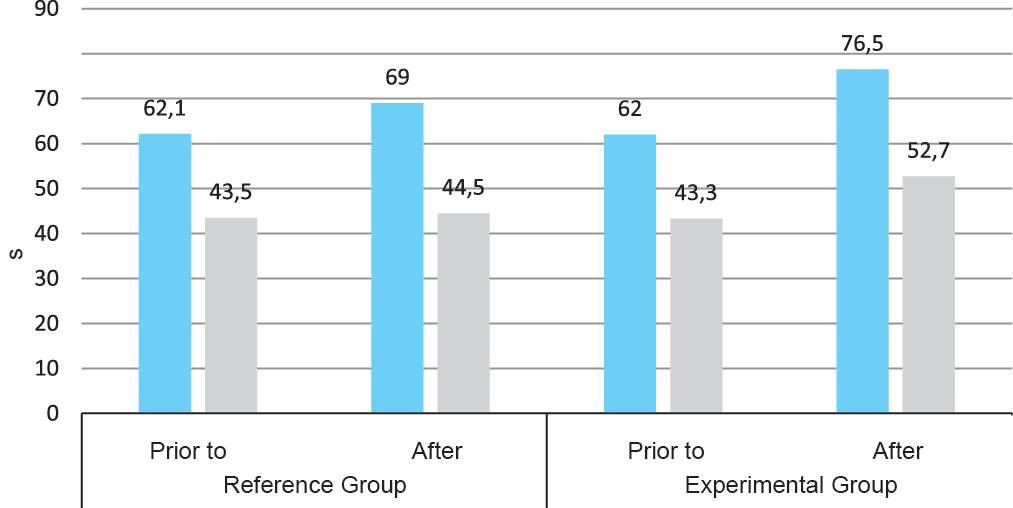
Figure 1. Pre- and post-experimental Breath-Holding Test rates of EG vs. RG (s)
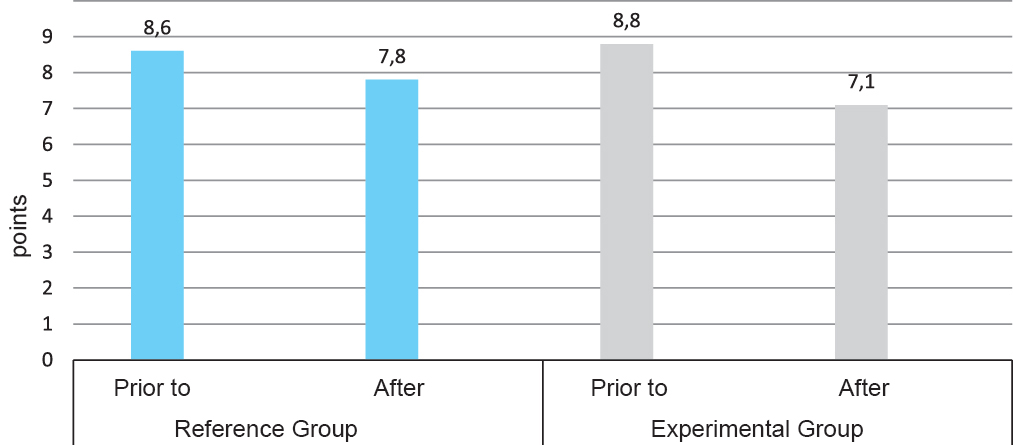
Figure 2. Pre- and post-experimental Ruffier-Dickson Test rates of EG vs. RG (points)
Having analysed the averaged progress test data ( ), of both groups by the end of the first year, we found the following:
– The averaged Breath-Holding Test rates were significantly higher in the EG (76.5±2s) versus the RG (69±3s) with the absolute difference making 8.2s (p≤0.05);
– The averaged Ruffier-Dickson Test rates were significantly lower (by 0.7 points) in the EG (7.1±2.1) versus the RG (7.8±2), with p≤0.05.
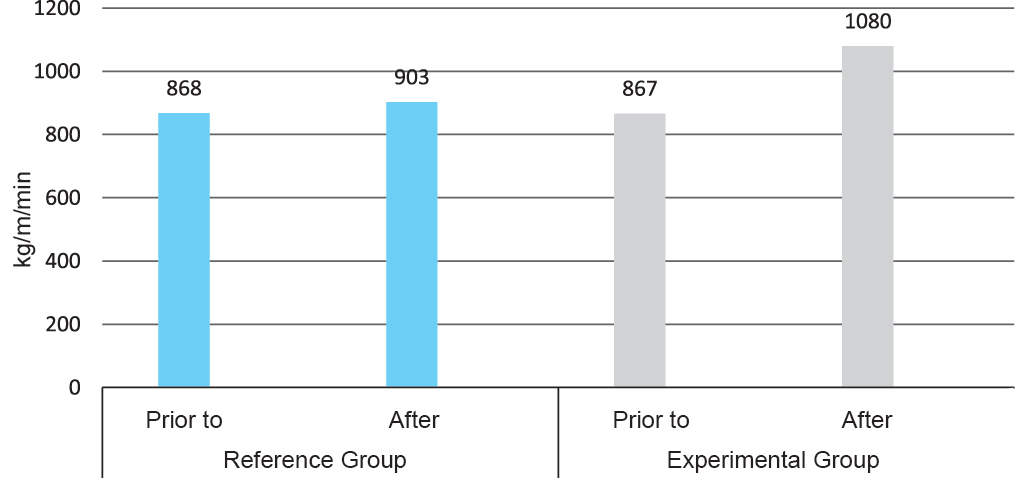
Figure 3. Pre- and post-experimental physical strength test rates of EG vs. RG (kg/m/min)
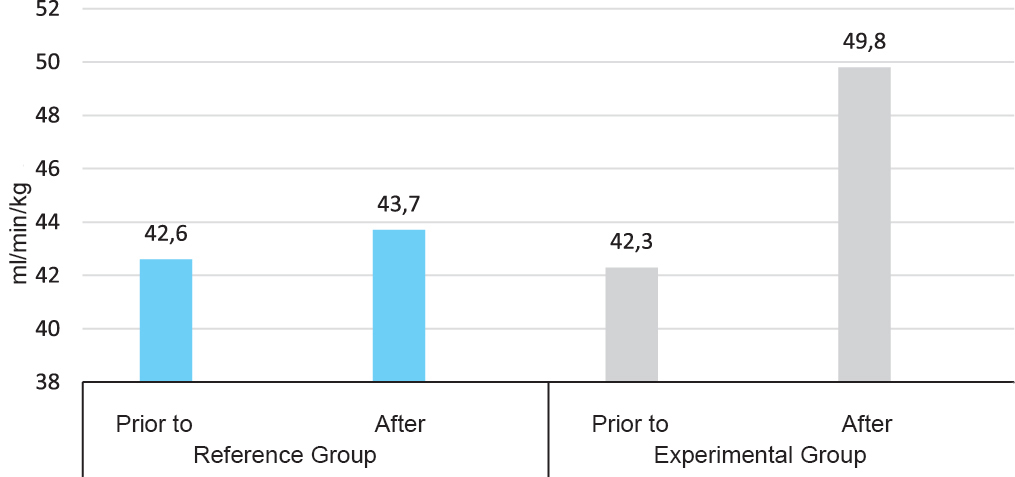
Figure 4. Pre- and post-experimental minute ventilation test rates of EG vs. RG (ml/min/kg)
– The physical strength test rates were significantly higher (by 177 kg/m/min) in the EG (1080±58 kg/m/min) versus the RG (903±156 kg/m/min), with p≤0.05;
– The minute ventilation rates were significantly higher (by 6.1 ml/kg/min) in the EG (49.8±0.2 ml/kg/min) versus the RG (43.7±0.4 ml/kg/min), with p≤0.05;
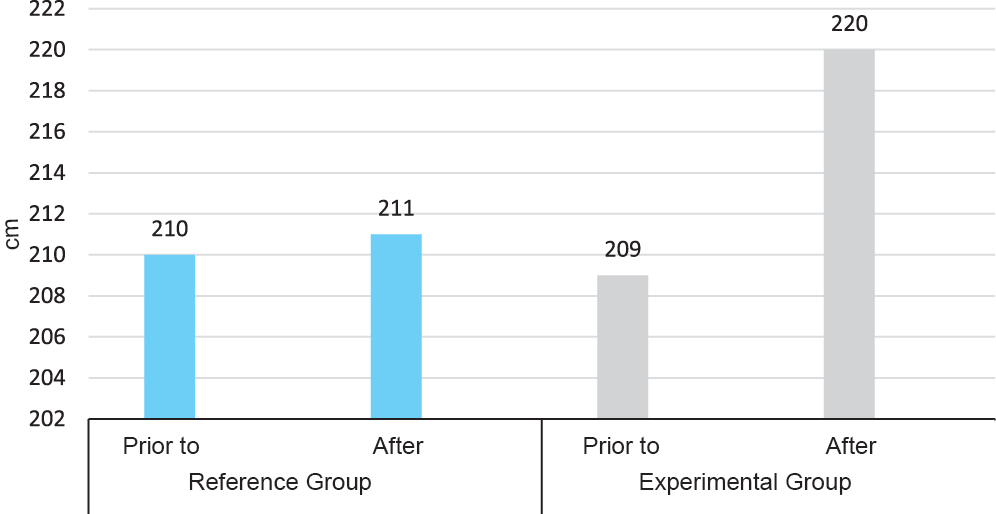
Figure 5. Pre- and post-experimental standing jump test rates of EG vs. RG (cm)
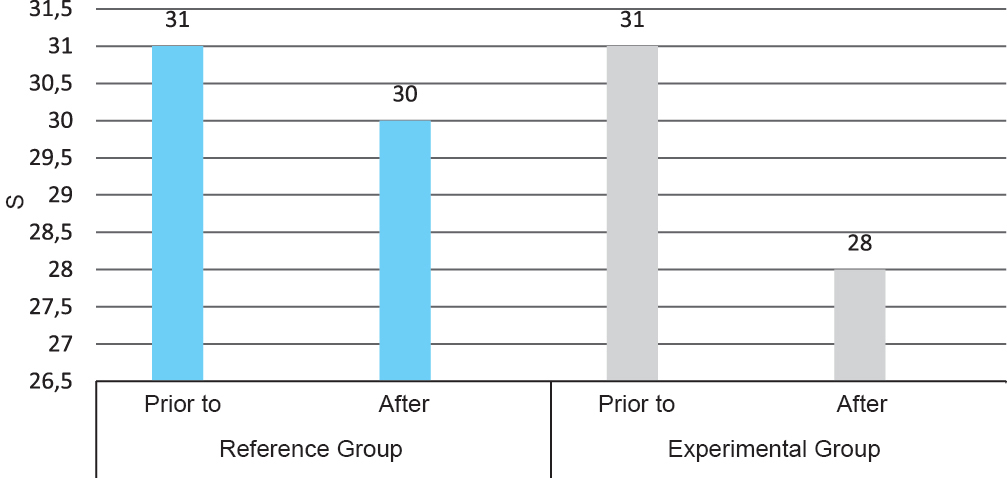
Figure 6. Pre- and post-experimental shuttle sprint test rates of EG vs. RG (s)
– The averaged standing jump test rates were significantly higher (by 11cm) in the EG (220±2.4cm) versus the RG (211±2,3cm), with p≤0.05; and
– The averaged shuttle run test rates were significantly better (by 2s) in the EG (28±0.3s) versus the RG (30±0.7s), with p≤0.05.
Conclusion. The Reference Group showed a marginal progress in the physical fitness rates and virtually no progress in the cardiovascular and respiratory system functionality test rates. The plyometric practice model showed its benefits as verified by the significant progress in the physical and functional fitness test rates and, hence, may be recommended for application in the academic education curricula and self-reliant off-class trainings at civil engineering universities.
We believe that plyometric practices may be highly beneficial for any motor qualities development system. Practical tests of the new training model showed its high contribution to the professionally important motor qualities building process in the physical education curriculum of a civil engineering university.
References
- Dementiev K.N., Borisov A.A., Bulat R.E., et al. Sovremennye tendentsii povysheniya effektivnosti fizicheskoy podgotovki kursantov v voennom vuze [Modern physical training efficiency improvement trends in military academies]. Teoriya i praktika fiz. kultury, 2016, no. 9, pp. 42-44.
- Egorov O.I., Safonova O.A. Vliyanie pliometricheskikh uprazhneniy na razvitie dvigatelnykh kachestv studentov stroitelnogo profilya [The effect of plyometric exercises on development of construction students’ motor qualities]. Mezhd. nauch. zhurnal «Simvol nauki». Ufa, 2016, no. 10 (2), pp. 127-129.
- Nikishkin V.A. Sovershenstvovanie sistemy fizicheskogo vospitaniya v vuze [Improvement of academic physical education system]. Fizkultura i sport publ., 2012, no. 5, 314 p.
- Safonova O.A. Professiogramma kak osnova soderzhaniya PPFP pri izuchenii distsipliny «Fizicheskaya kultura» v stroitelnykh vuzakh [Professiogram as a basis of APPT content in study of Physical Education discipline in construction universities]. Uchenye zapiski un-ta im. P.F. Lesgafta, 2012, no. 5 (87), pp. 117-121.
Corresponding author: safonov812@yandex.ru












